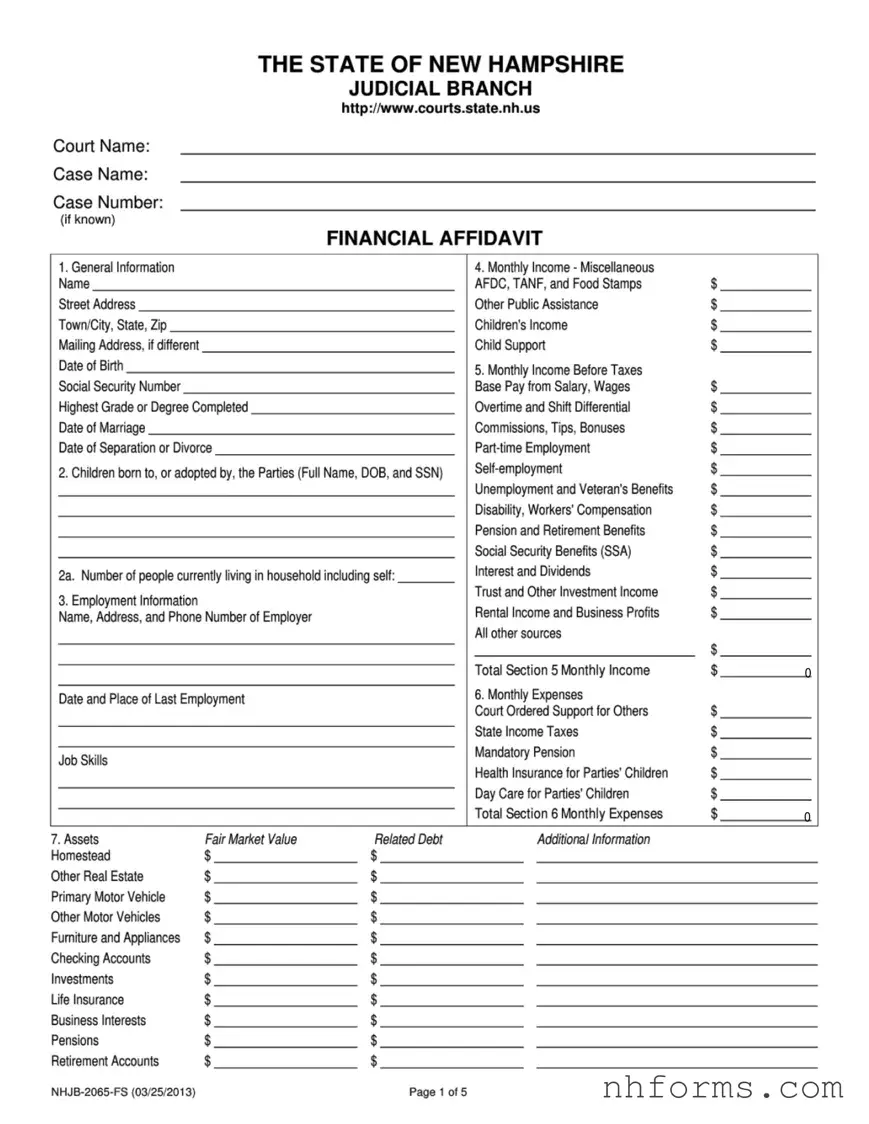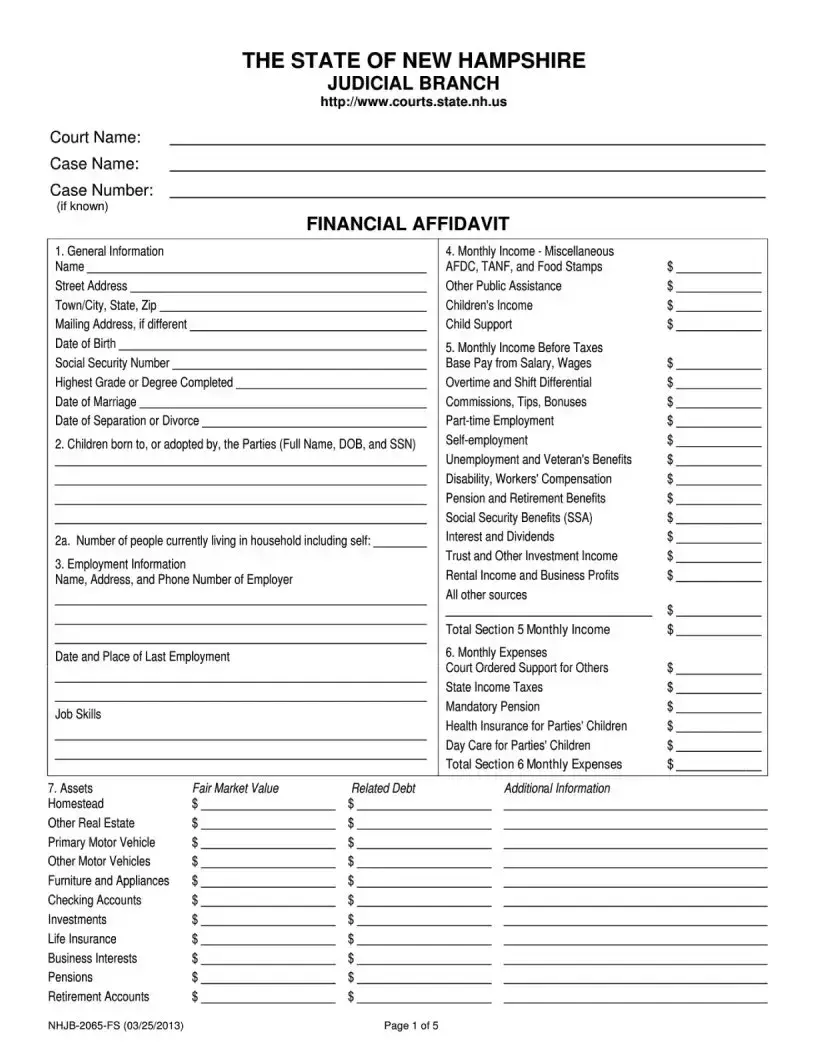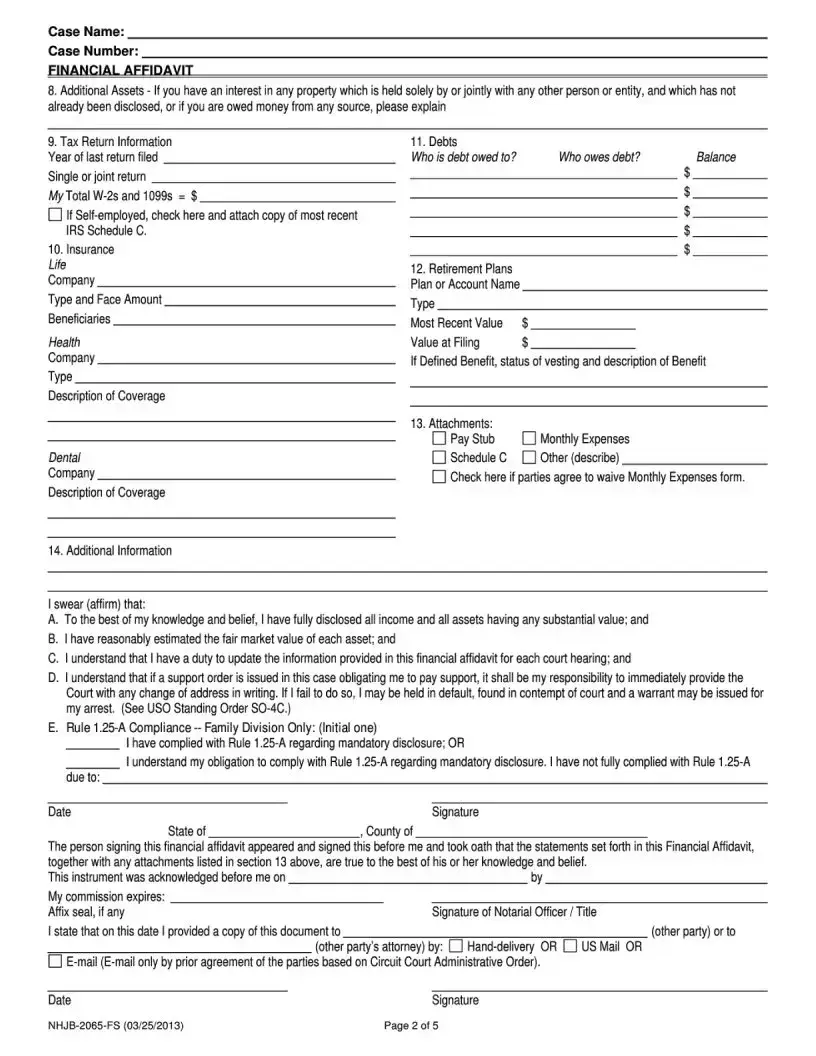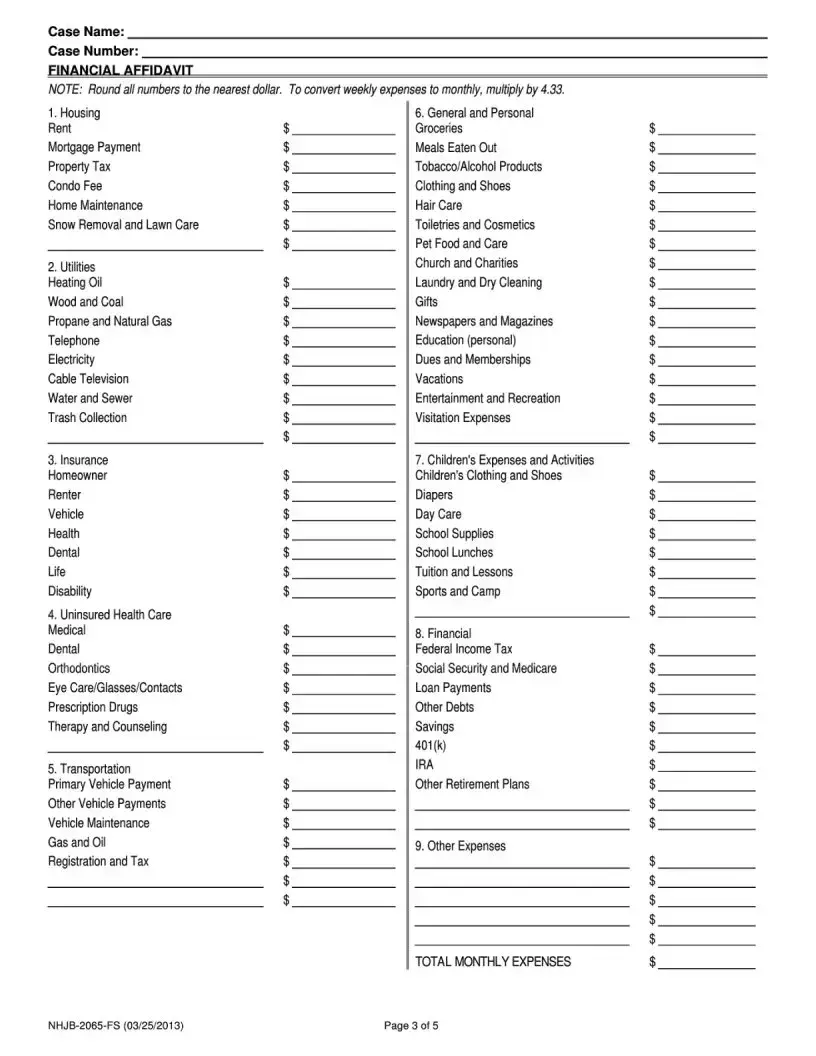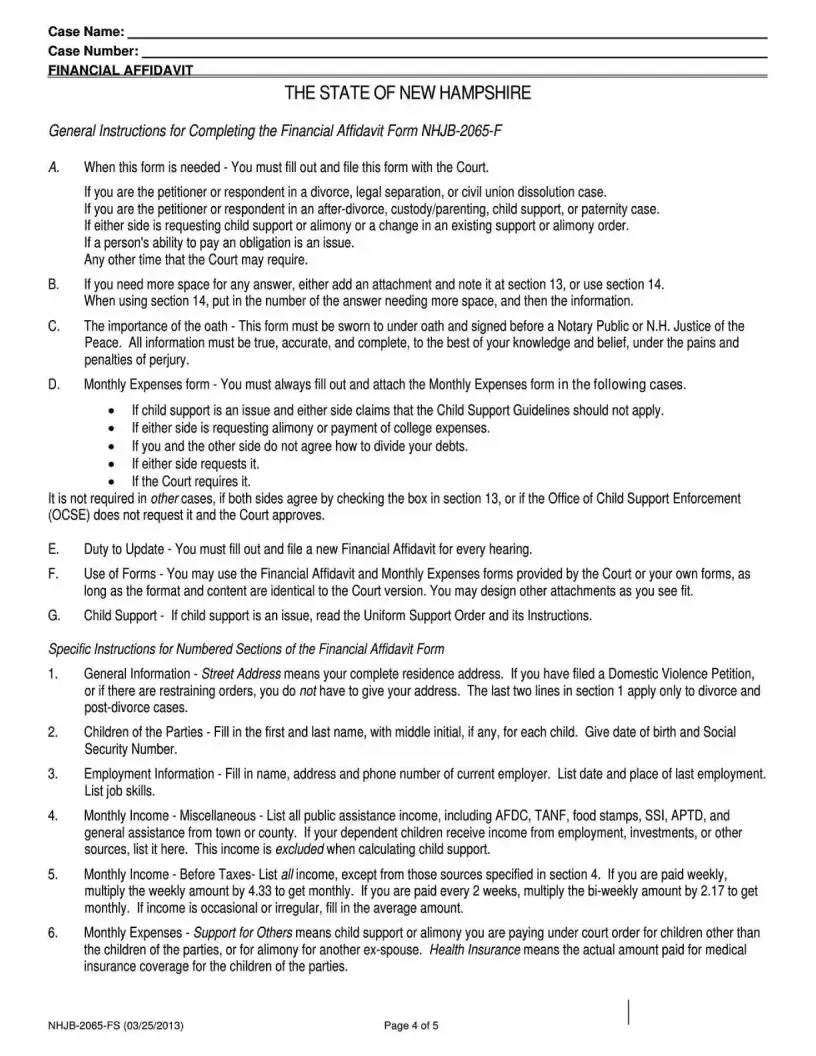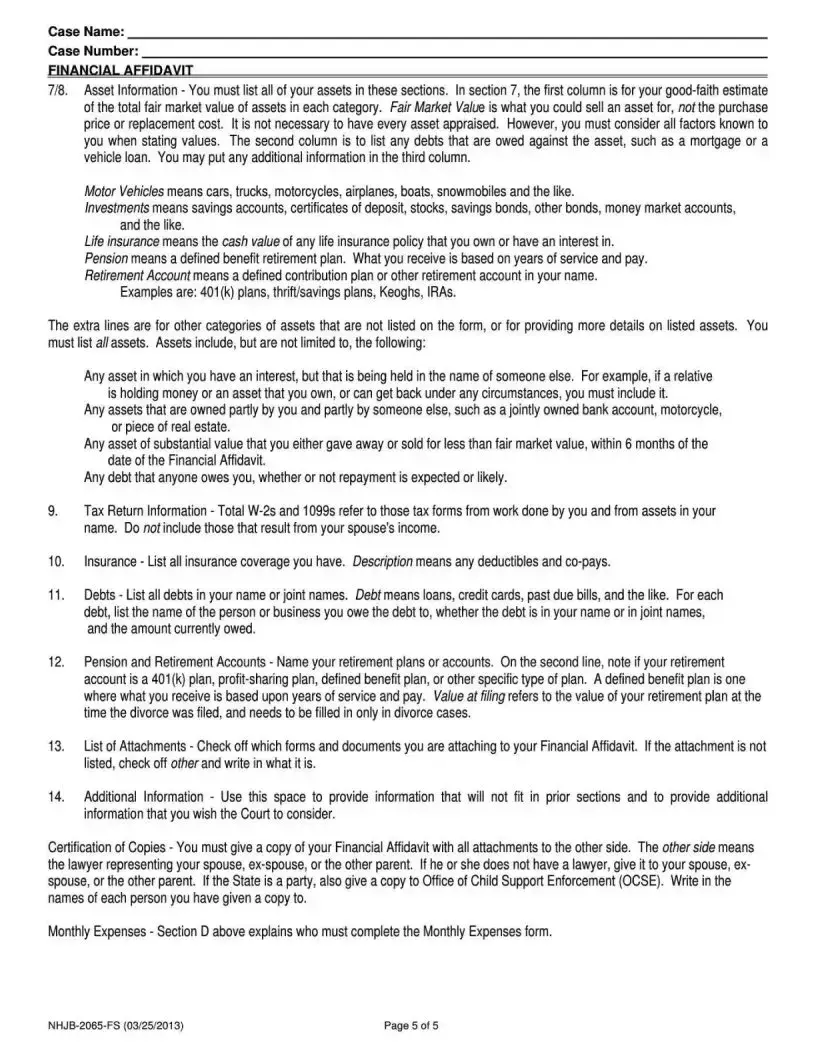What is the NHJB 2065 Fs form used for?
The NHJB 2065 Fs form, also known as the Financial Affidavit, is a crucial document in the realm of family law in New Hampshire. It is primarily used within divorce, child support, and alimony proceedings. The form serves as a comprehensive statement of a person's financial situation, detailing income, expenses, assets, and liabilities. This affidavit helps the court make informed decisions regarding financial obligations and entitlements among parties.
Who needs to fill out the NHJB 2065 Fs form?
Individuals involved in legal cases that include financial disputes or determinations, such as divorce, child support, or alimony, are required to complete the NHJB 2065 Fs form. Both parties in a dispute may need to submit this affidavit to the court to ensure a fair assessment of financial responsibilities and resources.
Where can I find the NHJB 2065 Fs form?
You can obtain the NHJB 2065 Fs form from the New Hampshire Judicial Branch’s official website. It is also available at local court clerks' offices. Ensuring you have the most current version of the form is important, as updates might occur that could affect the information required for your case.
What information do I need to provide in the NHJB 2065 Fs form?
Completing the NHJB 2065 Fs form requires detailed information about your financial situation. This includes your income from all sources, monthly expenses, assets (such as real estate, vehicles, and investments), and any debts or liabilities. The aim is to paint a comprehensive picture of your financial standing for the court's consideration.
How do I submit the NHJB 2065 Fs form once completed?
After filling out the NHJB 2065 Fs form, you should file it with the court handling your case. The exact submission process may vary depending on the court's procedures, so it's advisable to consult either your attorney or the court clerk. Some courts might allow or require electronic filing, while others may need a hard copy.
Is there a deadline for submitting the NHJB 2065 Fs form?
Yes, there is typically a deadline for submitting the NHJB 2065 Fs form, and it can vary depending on the specifics of your legal case. The deadline is usually set by the court and may be outlined in the scheduling orders or directives you receive. Missing this deadline could have significant implications for your case, so it's critical to submit the form promptly.
Can the information provided in the NHJB 2065 Fs form affect the outcome of my case?
Absolutely. The information disclosed in your Financial Affidavit plays a pivotal role in how the court determines financial issues such as support obligations or asset division. Accurate and honest disclosure of your financial situation is imperative, as it directly influences judgments regarding alimony, child support, and the equitable distribution of assets.
What should I do if my financial situation changes after submitting the NHJB 2065 Fs form?
If there is a significant change in your financial circumstances after you've submitted the NHJB 2065 Fs form, you should file an updated affidavit with the court as soon as possible. Changes could include a job loss, substantial alteration in income, or any other factor that affects your ability to meet financial obligations or entitlements as previously reported. Keeping the court informed ensures fairness and accuracy in financial determinations related to your case.
